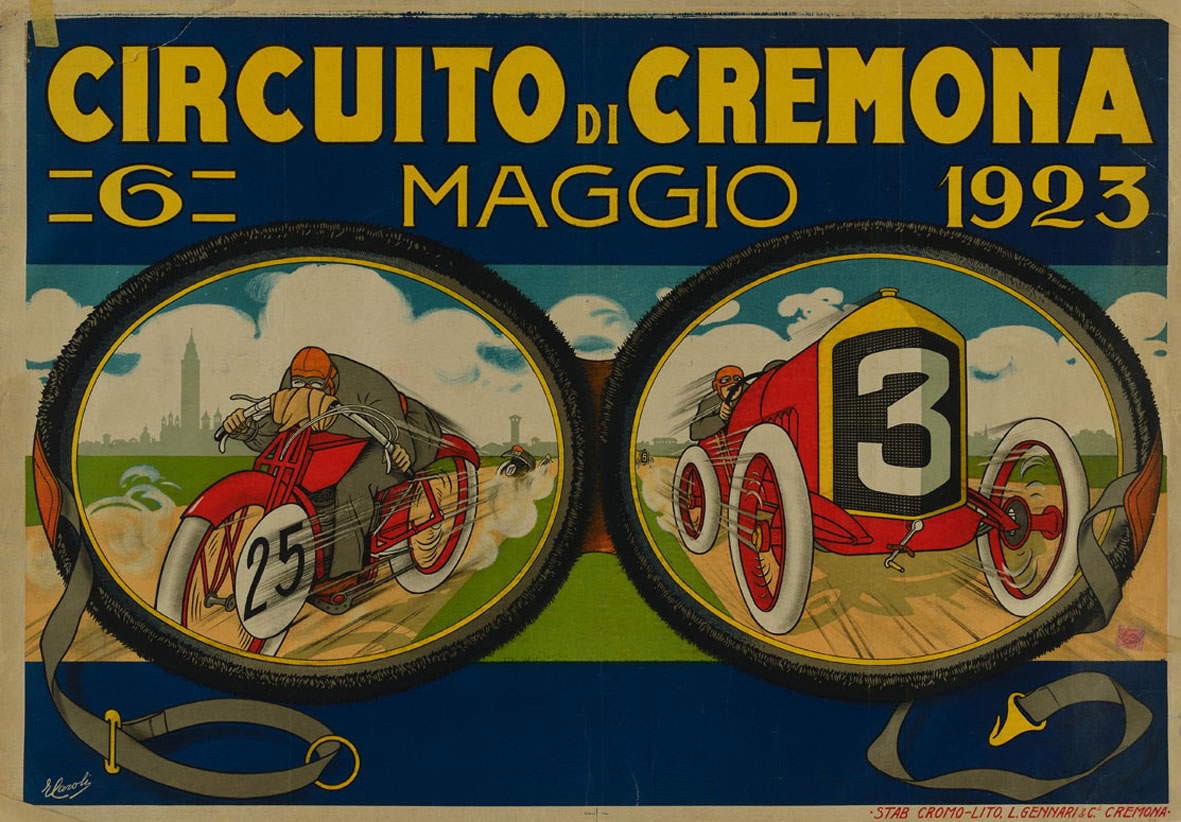Glasses... on the posters of the Salce and Stramare Collections: an exhibition on the theme in Treviso
From May 18 to October 6, 2024, the Salce Collection National Museum in Treviso presents, in collaboration with Punti di Vista, the exhibition Art of Seeing. Posters and Glasses from the Salce and Stramare Collections, curated by Elisabetta Pasqualin and Michele Vello, with the collaboration of Mariachiara Mazzariol.
The exhibition, which will be set up in the former church of Santa Margherita, intends to deal with eyewear on two levels of reading: representation, through advertising posters from the Salce collection, and form, through historical eyewear from the Stramare collection. The polychrome paper visions of Ferdinando Salce ’s posters will thus be placed next to the thousand declinations of the round of Lucio Stramare ’s glasses in an ideal dialogue between two collectors.
Visitors will be able to have fun comparing the glasses with their depiction, which becomes abstract or punctual depending on the illustrator and the style peculiar to each era. Spectacles in posters, rarely and late objects of direct advertising, become protagonists as functional adornment: in fact, they emphasize expressions, sharpen gestures and enhance the social status of the wearer.
Three sections of the exhibition represent a chronological journey through the evolution of the forms of seeing. From the first rudimentary creations where the device was still held in the hand or attached to the face with strings of string, to the invention of rods in the 18th century, which marked the formal turning point of an object that accompanies us in our everyday lives. There will be no shortage of curiosities, for at least until the first decade of the twentieth century, other forms coexisted alongside the actual spectacles, such as the vexatious and elaborate fassamani and pince-nez of Cavourian memory. Lifestyle and industrial progress then changed eyeglass design, and this is well represented by the borderline details of goldsmithing in the 1930s, the colors of the 1940s and the unforgettable “cat” shapes of the 1950s. Design lovers will be interested in the case dedicated to special and working glasses, with sometimes improbable but effective shapes in the agreement between form, function and the study of materials: precious ones such as gold and silver, natural ones such as horn, tortoiseshell, wood and leather, up to the first discoveries of the chemical industry such as Bakelite and celluloid. Completing the exhibition will be the contribution of contemporary eyewear design, represented by the selection of the best project work by ITS eyewear product manager students. The course, sponsored by the ITS Cosmo Foundation of Padua and the Certottica entity of Longarone, aims to train the eyewear designers of tomorrow. The posters on display here represent a bridge between the past and the future through the complementary languages of graphics and design.
Signing the posters on display in the exhibition are well-known names in poster design first and in designed graphics later, not only from Italy. The Belle Époque showcases mischievous female figures peered at by ambiguous monocles: examples include La vedova Allegra, a still pictorial masterpiece by Leopoldo Metlicovitz (1907), as well as Absinthe Pernot (1900), cartello avant la lettre by the more synthetic and up-to-date Cappiello. Next to them, fashionable dandies wear lenses, more as a vein: Luciano Mauzan’s ironic stroke offers a parody of a modern Petronius (1915), arbiter elegantiae for a footwear brand of the same name. Lesser-known artists then surprise: Luigi Enrico Caldanzano with nocturnal, almost dreamlike and symbolist images, which fit well with the disturbing Radioactive Lenses (1912-1915) to be promoted, or Goliath (Eugenio Colmo), whose caricature vein will draw “the dark-lensed Chinaman.” He would accompany, with his graphic evolutions, a well-known brand of Turin opticians for many years to come.
A winning binomial was that between eyeglasses and speed: goggles for protection, certainly not for sight, for motorists driving blazing-red bolides, with author’s proofs such as Marcello Dudovich’s innovative Dunlop (1908). And featured prominently, belting the helmets of Plinio Codognato’s seductive motorcyclists (Moto Bianchi 1920-25, Gilera 1929).
Sunglasses did not make an appearance until later and at the movies, shown here worn by the unmatched style icon Grace Kelly in Caccia al ladro (1955), whose poster for the film’s Italian release is shown. And from the movies, dark lenses on fashionable frames invade tourist posters (with the masters of the genre: Mario Puppo and Franz Lenhart), enriching sunny beaches and ultra-modern ski slopes with glamour. The billboard shrinks in size, becomes a playbill or counter display: above all, it is part of a more complex communication strategy, in which the product to be promoted is labeled, packaged, and animated. The graphics are totally renewed, in love with America, its shapes, its colors. The 1950s have arrived.
Definitely unprecedented are the posters of theNational Association for the Prevention of Accidents, since 1926 transformed into a corporation, with a series of graphically naive plates, based on emotional communication, with dark and threatening tones, with illustrated rotogravure contrivances. Also on display will be a rare advertising page with a nursery rhyme by Trilussa, here the author of a playful bodycopy promoting Salmoiraghi Lenses.
For info: http://www.collezionesalce.beniculturali.it/
Hours: Friday through Sunday from 10 a.m. to 6 p.m.
Image: E. Caroli, Cremona Circuit (1923)
 |
| Glasses... on the posters of the Salce and Stramare Collections: an exhibition on the theme in Treviso |
Warning: the translation into English of the original Italian article was created using automatic tools. We undertake to review all articles, but we do not guarantee the total absence of inaccuracies in the translation due to the program. You can find the original by clicking on the ITA button. If you find any mistake,please contact us.





























